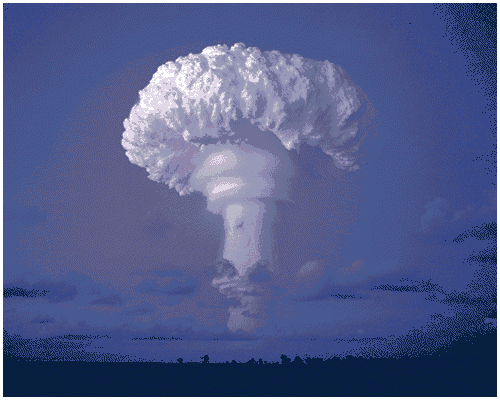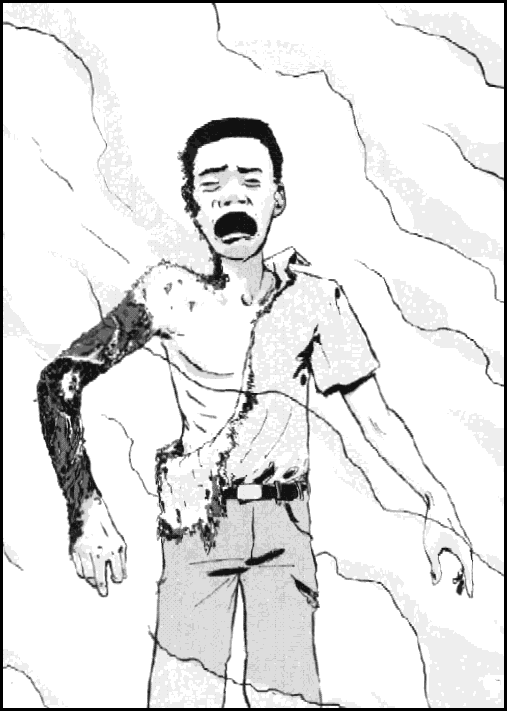A Graphic History of
The First Atomic Bomb
Jonathan Fetter-Vorm
(Hill & Wang)

I can't think of a more grim and grisly subject for what we used to call a "comic book." But Fetter-Vorm --- another one of those out-of-the-blue names --- makes the best of a horrific story. He manages to include the "beautiful vistas and the fresh alpine air" of the mountains of New Mexico, which he calls "the only appropriate birthing ground for a force as elemental as an atomic bomb."
Then --- after a side-trip to "the Chicago Pile," the "Hanford Reactor," the enriching (lovely word) that took place in Oak Ridge to produce U-235 --- there is a brief aside on the crucial element in a chain reaction, namely "criticality." Another side trip takes us to the first test explosion, complete with Oppenheimer and the Bhagavad Gita:
- You have numberless arms, and the sun and the moon are among your great, unlimited eyes ... O mighty one, be gracious toward me.
In 1945, the story of The Bomb was a happy one for those of us who lived through WWII. The abrupt surrender was a dream come true, for we had heard that the Japanese were expecting to continue the war on their homeland. We heard rumors of the horrific casualties if and when the invasion came. Then suddenly, out of the blue --- and if you looked up, it was out of the blue --- came the two monster bombs that brought instant peace. Peace, we thought. Now we are done with war.

Towards the end of Trinity we are shown the famous meeting between Oppenheimer and President Truman, Oppie saying that he feared that he had blood on his hands, and Truman cynically offering his handkerchief. And later saying to his secretary, "I don't want to see that son of a bitch in this office ever again."
When I was a kid, comic books were about Superman and Captain Marvel and Billy Batson and Shazam and Plastic Man and Smoky Stover. Laugh a minute, thrills and chills --- overhead, a bird, a plane.
Now there is something else again, and there is something else in the graphic arts too: books that can no longer called comic books. Trinity is 150 pages filled with Hiroshima, Nagasaki, radiation burns, 250,000 dead and a time when we in the United States grew up so rapidly that we didn't know what hit us.